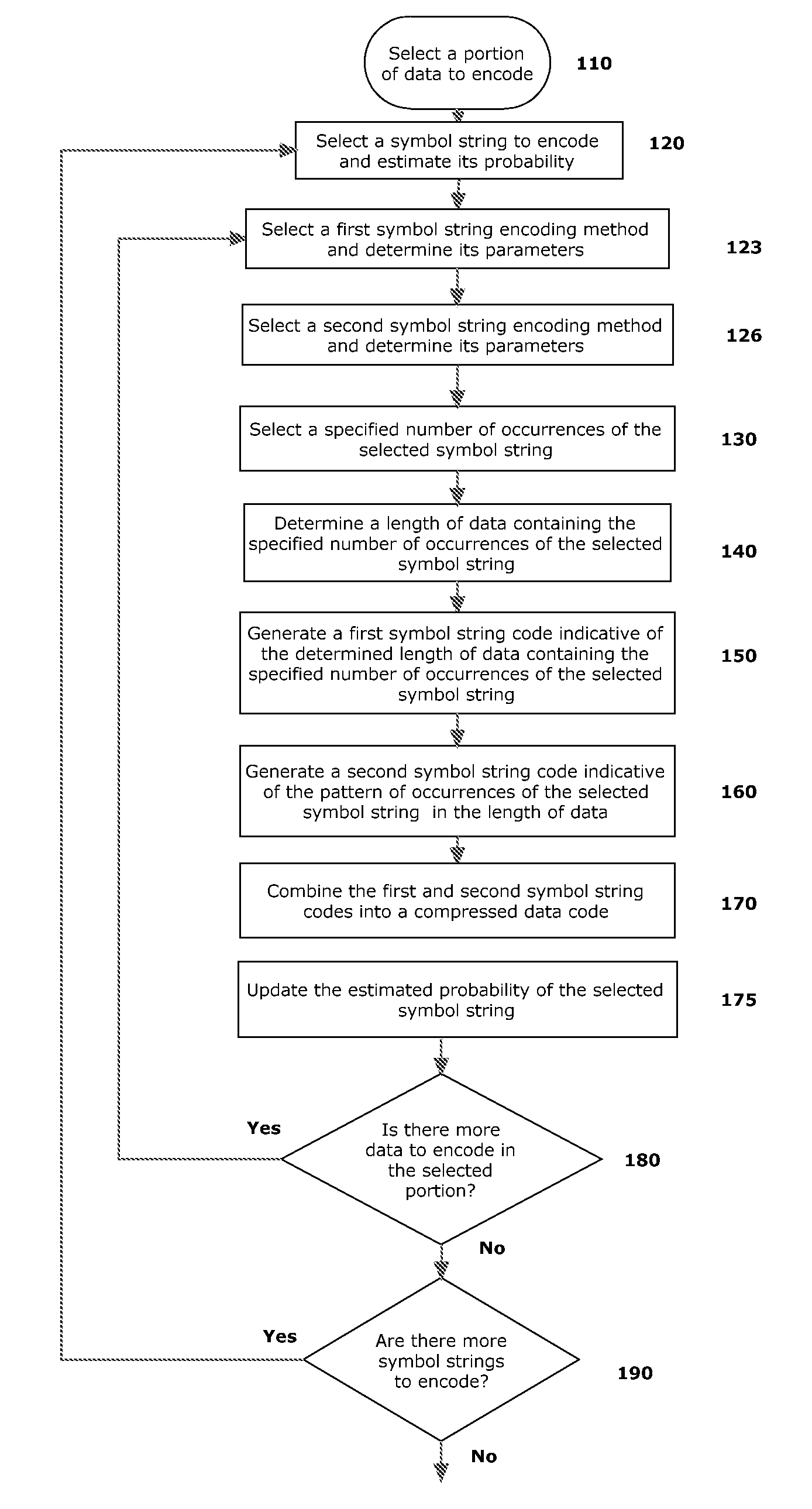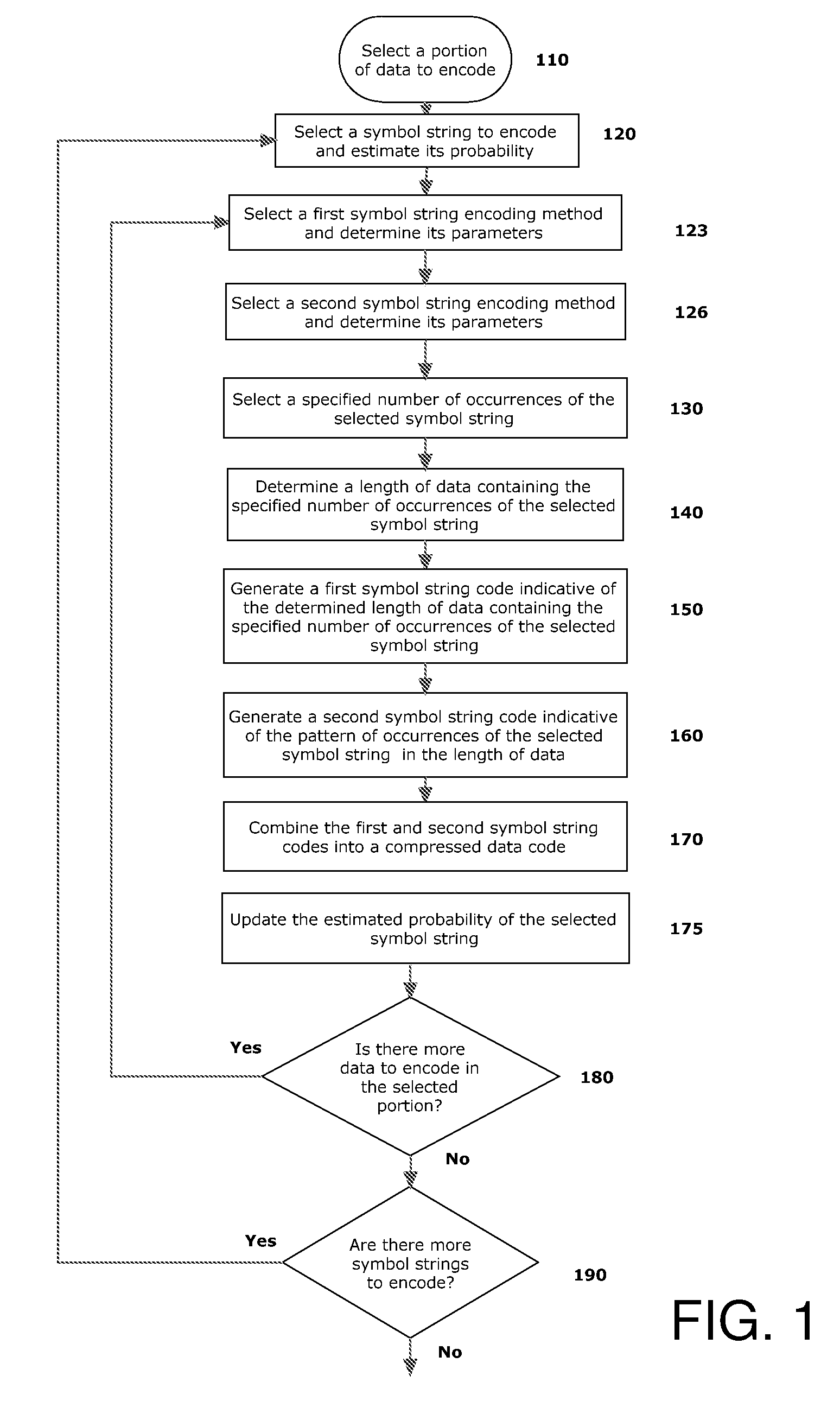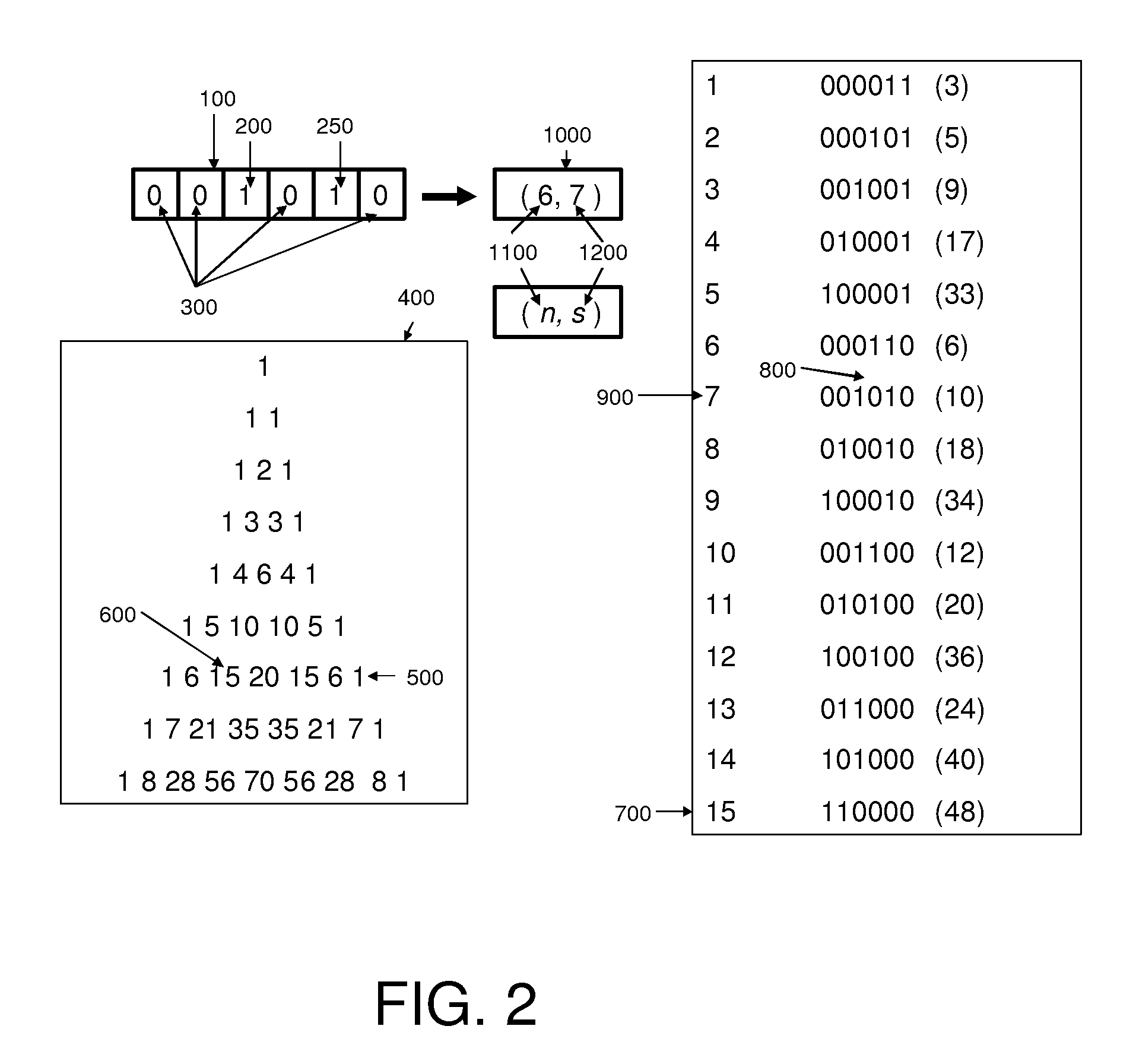Adaptive combinatorial coding/decoding with specified occurrences for electrical computers and digital data processing systems
a technology of combinatorial coding and data processing system, applied in the field of data compression, can solve the problem of data transmission cost in terms of bandwidth utilization
- Summary
- Abstract
- Description
- Claims
- Application Information
AI Technical Summary
Benefits of technology
Problems solved by technology
Method used
Image
Examples
first example
[0042]FIG. 2 illustrates one specific, non-limiting, illustrative first example embodiment involving a process of encoding a sequence of six binary bits, 100, in which the symbol ‘1’ occurs twice, at 200 and 250, although any number of occurrences might be used and claimed subject matter is not limited in that respect. Of course, claimed subject matter is not limited to this example embodiment or to any one particular embodiment. This example is simply an illustration for explanatory purposes. Many other potential embodiments are intended to be included within the scope of claimed subject matter.
[0043]The binary sequence 100 includes a pattern which contains ‘0’ symbols in certain positions 300 and ‘1’ symbols in other positions 200 and 250. In one embodiment, a desired number of occurrences of a first symbol string code (hereafter ‘r’) may be specified and by examining sequence 100, a length ‘n’ or ‘run’ of data may be determined which contains exactly r occurrences of the symbol s...
second example
[0147]As a further illustrative, non-limiting, second example embodiment, consider a short sequence S of 8 symbol strings S1 to S8. A method of encoding by selecting symbol strings and indicating their positions in a sequence of data by run length encoding is known as MERGE coding as described in D. M. Monro, X. Wang, W. Huo, and A. N. Evans, ‘Merge coding of atoms for wavelet / matching pursuits image compression’, Proc. IEEE Int. Conf. Acoustics, Speech, Signal Process. (ICASSP 2007), Hawaii, April 2007, and is the subject matter of co-pending U.S. patent application Ser. No. 10 / 572,121. For purposes of illustration, symbol strings here may comprise a fragment of text, although claimed subject matter is not limited in scope in this respect. Such fragments may be short and, furthermore, symbol strings may not comprise text at all and still be within the scope of claimed subject matter. A space between the two words also comprises a symbol string in this example, as illustrated below:...
third example
[0166]An advantage may be gained in a third illustrative example embodiment by taking account of the reduction in the number of unknown data positions, by skipping over the unknown positions if n is determined and the pattern s is encoded, again specifying r=2 for the purposes of illustration.
[0167]In encoding ‘h’ in this third example illustrative embodiment, no positions are previously known so that there is no difference in the encoding. Therefore to indicate that there is only one occurrence of ‘h’ which is insufficient to satisfy the specified value of r=2, the first symbol string code is taken as n=9 as before. This may tell a decoder in this embodiment that there is only one occurrence of ‘h’, and the second symbol string code s8 may indicate selection of one of the eight possible patterns of one ‘h’ among eight symbols.
[0168]However in moving on to coding ‘space’, both an encoder and decoder may know, in this third illustrative example embodiment, that there are only seven u...
PUM
 Login to View More
Login to View More Abstract
Description
Claims
Application Information
 Login to View More
Login to View More - R&D
- Intellectual Property
- Life Sciences
- Materials
- Tech Scout
- Unparalleled Data Quality
- Higher Quality Content
- 60% Fewer Hallucinations
Browse by: Latest US Patents, China's latest patents, Technical Efficacy Thesaurus, Application Domain, Technology Topic, Popular Technical Reports.
© 2025 PatSnap. All rights reserved.Legal|Privacy policy|Modern Slavery Act Transparency Statement|Sitemap|About US| Contact US: help@patsnap.com



